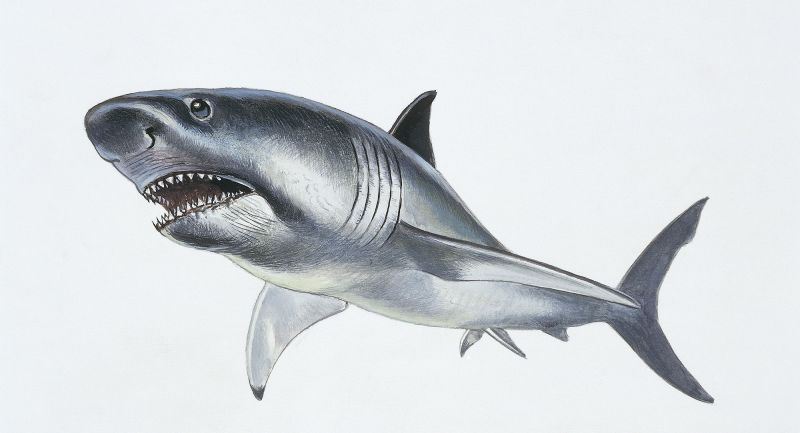
Rare Sighting of Newborn Great White Shark in the Wild

A groundbreaking discovery off the coast of Southern California has unveiled a remarkable sighting of a newborn great white shark in its natural habitat. The rare footage, captured by wildlife filmmaker Carlos Gauna and doctoral student Phillip Sternes, has sparked excitement and curiosity among shark enthusiasts and marine biologists alike.
The Remarkable Encounter
In a momentous moment for marine science, a team of researchers captured extraordinary drone footage off the coast of Carpinteria, California, revealing what appears to be the first-ever sighting of a newborn great white shark in the wild. The sighting, which occurred on July 9, 2023, has left experts astounded and eager to unravel the mysteries surrounding the birth and early life of these elusive predators.
UNSPECIFIED - CIRCA 2003: Reconstruction of Megalodon, (Carcharodon megalodon) extinct species of shark which lived between the Eocene and the Pliocene Period. Drawing. (Photo by DeAgostini/Getty Images)
The 1.5-meter-long (5-foot-long) white shark was observed by Carlos Gauna and Phillip Sternes, who were conducting aerial video and image documentation. What caught their attention was the shark's pale coloring and unusual size, distinct from the typical appearance of adult great white sharks. Upon closer examination of the drone footage, the researchers noticed a thin, white film shedding off the shark as it swam, leading them to believe that it was a newborn white shark shedding its embryonic layer.
The remarkable encounter has been documented in a study published in the peer-reviewed Environmental Biology of Fishes journal, shedding light on the fascinating behavior and physical characteristics of newborn great white sharks. This groundbreaking discovery has the potential to reshape our understanding of the early stages of great white shark development and their natural habitat.
Unraveling the Mystery
The researchers have put forward compelling evidence to support their groundbreaking sighting of the newborn great white shark. They propose that the shark's pale coloring and the shedding of a white film are indicative of its recent birth. This aligns with the known reproductive behavior of great white sharks, where the embryos feed on unfertilized eggs and receive nourishment from uterine milk secreted by the mother.
While the possibility of an unknown skin disorder causing the shark's whitish color cannot be ruled out, Carlos Gauna and Phillip Sternes firmly believe that the most plausible explanation is the presence of a newborn great white shark in the wild. Their observations, coupled with the presence of mature sharks in the same area, further reinforce their hypothesis of a birthing ground for great white sharks off the coast of central California.
This rare sighting has sparked enthusiasm and interest among shark researchers and marine biologists worldwide. It presents an unprecedented opportunity to delve into the elusive reproductive cycles and early life stages of great white sharks, offering valuable insights that could contribute to their conservation and protection.
Implications and Future Research
The groundbreaking discovery of a newborn great white shark in its natural habitat has opened up new avenues for research and conservation efforts. While the sighting has generated excitement and intrigue within the scientific community, it also underscores the need for further investigation and evidence to validate this unprecedented observation.
The potential significance of this sighting extends beyond the realm of marine science, as it could provide crucial insights into the reproductive ecology and habitat preferences of great white sharks. This, in turn, may inform conservation strategies and management practices to safeguard the future of these iconic predators.
As the research team continues to analyze the drone footage and gather additional evidence, the scientific community eagerly anticipates the validation of this historic sighting and the valuable knowledge it could unlock. The implications of this discovery have the potential to shape the conservation efforts and scientific understanding of great white sharks for years to come.







